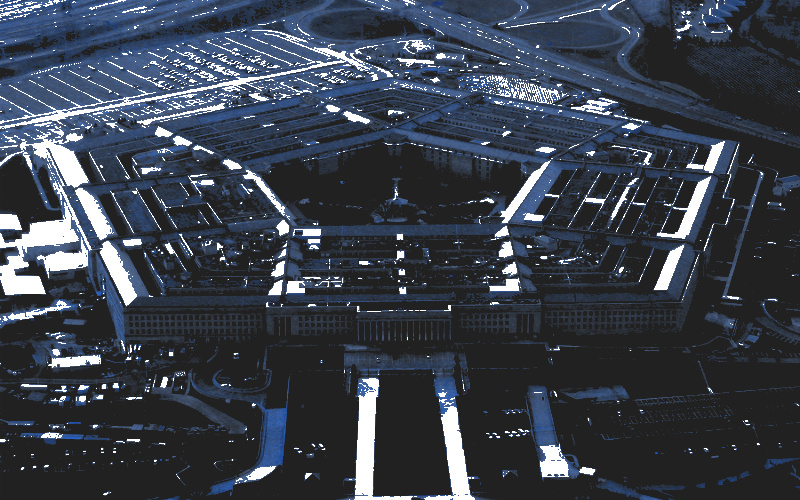Harry Potter and the Five-Sided Labyrinth

Not long ago I was searching for an obscure office off a little-used corridor in the lowest subterranean level of the Pentagon when I had an epiphany. Though it seems far-fetched at first glance, J. K. Rowling’s fabulously successful series of Harry Potter novels is nothing less than a thinly-disguised allegory of the U.S. armed forces. (Readers who have avoided becoming acquainted with the Harry Potter stories should probably just turn aside at this point.)
Rowling’s tale is about good, evil, and coming of age in a community based on arcane magic, existing among but hidden from the rest of human society. It revolves around Hogwarts, an academy where trainee wizards learn their craft. Students arriving at Hogwarts are assigned to one of four centuries-old houses within the school based on their personality traits, and their lives then revolve around these identities as the houses vie with each other for preeminence. And this is where the parallels with the American defense establishment start revealing themselves.
Gryffindor’s house colors are red and gold. Its members (who include Harry Potter and most of the other protagonists in the stories) are selected for their courage, and are widely held in high regard. Its most famous icon is a sword, which appears frequently in the Potter movies, meaning that over the years it has been flourished on television screens about as often as swords in those Marine Corps recruiting ads we all grew up watching. Yes, the Gryffindors are the Marines.
The house with blue livery is Ravenclaw, and its symbol is an eagle. It prizes intelligence above all, and gets the smartest recruits. Yet for all their cleverness, Ravenclaws are consistently relegated to a secondary role in the narrative, augmenting the other houses from time to time with quirky supporting characters and presumably wondering why people don’t take them more seriously. Ravenclaw’s greatest relic is a diadem. Seen the U.S. Air Force symbol lately? It’s a star-shaped diadem.
With the house name least likely to be mistaken for that of a superhero, Hufflepuff has an identity based on dependability. Its members are loyal and steadfast, core values that make them well-liked. But it is also generally perceived as the least prestigious house, with a reputation as the place for those who can’t make the cut at one of the others. Hufflepuff’s heraldic colors are yellow and black, just like the U.S. Army logo, and its totem is the close-combat-optimized badger.
Finally, Slytherin House—traditionalist, independent, ambitious, and cunning—is the Navy. “Well, obviously,” said one DoD staffer when he heard the suggestion. Remember the Revolt of the Admirals? Slytherin.
Is this just an impossibly consistent pattern of coincidence? Not if we are to believe the author. I looked it up: Rowling acknowledges that she consciously associates the four Hogwarts houses with the four classical natural elements: air for Ravenclaw, earth for Hufflepuff, water for Slytherin, and fire for Gryffindor.
Each house has a head (i.e., service chief) and above them is the Hogwarts headmaster (CJCS). The Minister for Magic (SecDef) oversees a vast ministry (DoD) whose labyrinthine headquarters building is protected by elaborate security measures that make it difficult to enter—many employees arrive there by being flushed down enchanted toilets, an experience that will resonate on multiple levels with long-suffering denizens of the C-ring.
The allegories continue to a degree that seems remarkable in a set of works by a non-American writer without military experience. The Department of Mysteries, with caverns full of cryptic prophecies, is the wizards’ Intelligence Community. Francophone magical academy Beauxbatons is NATO, pretty and elegant but not Hogwarts’ equal in a serious fight. Soul-sucking Dementors lie in wait for unwary wizards like the contemporary media. Diagon Alley is the military-industrial complex. Muggles are civilians.
The story’s diabolically megalomaniacal and serially returning villain, Lord Voldemort, appears on the surface to be inspired by the character of Douglas MacArthur. But there is more to his story. The Dark Lord’s scheme to achieve immortality by splitting his soul into many parts and secreting them far and wide to make him invulnerable to his enemies is drawn from the modern defense acquisition world, where pieces of a well-designed program will be placed in as many congressional districts as possible for precisely the same reason.
Meanwhile back at Hogwarts, the walls are lined with talking portraits of long-dead wizards, who comment on the actions of the living and offer sometimes sage advice. Harry Potter’s world even has its own retired senior mentors program.
The author is a Washington-based policy analyst. The views expressed here are his alone and do not reflect the opinions of the Ministry for Magic.
Photo credit: David B. Gleason (adapted by WOTR)

